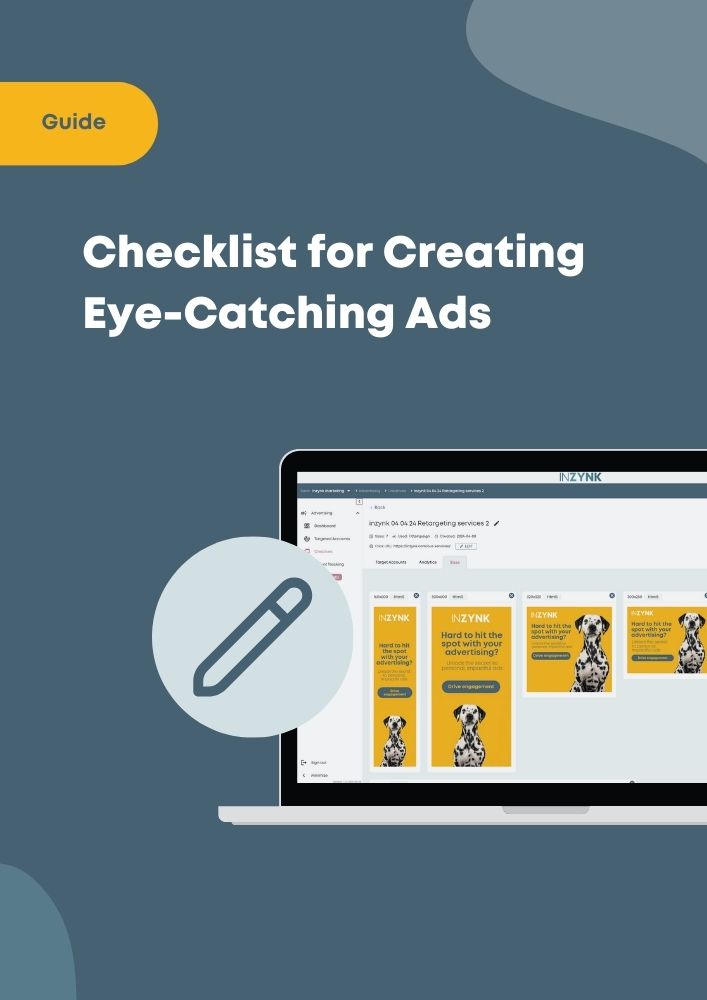In the B2B landscape, decision-making heavily involves research and internal discussions, with direct supplier interactions making up only about 17% of the buying process. This means ads must be impactful during the research phase to be memorable when decisions are being discussed.
This is why a strategy that targets and resonates deeply with each specific company would be much more effective. Instead of just highlighting what you sell, your ads should reflect the needs of each target company, and specifically address their pain points. To further pique their interest, they should also reflect the target company’s unique brand identity. This type of targeted approach ensures your ads make a lasting impression in the limited time they are viewed.
In this guide, we will take a closer look at how to create such tailored ads. We’ll explore strategies for understanding your target company’s unique needs, how to design ads that mirror their brand, and ways to ensure your message is both relevant and impactful. By the end, you’ll be equipped with the knowledge to create ads that stand out and drive meaningful engagement.
Personalization: Tuning Ads to Target Needs
Tailoring ads for a specific company involves deep personalization. Unlike traditional ads, which typically take a one-size-fits-all approach, tailored ads focus on the unique characteristics of each target company. Standard ads often highlight the features and benefits of the product or service being sold, aiming for broad appeal across a diverse audience. Such ads might struggle to stand out in a crowded market and often miss the mark in addressing the specific needs and challenges of individual companies.
By focusing your message on the needs and aspirations of the target company, rather than on your product or service, you shift the conversation to how you can add value to their business. This strategy is more likely to drive meaningful interactions and foster long-term relationships.
Visual Elements In Sync with Your Target Company
When your ads look and feel almost as if they had been made by the company you are targeting, they are more effective in building trust and capturing the attention of those within the company. This creates a sense of recognition and relevance that resonates intuitively. Focusing on the visual aspects such as the use of colors, images, fonts, and design elements can therefore greatly enhance the ad’s appeal. Just make sure you don’t over-imitate – remember, it’s a nod to the brand, not an exact copy.
Color Scheme
Adopt a few of the colors from the target company’s primary color palette in your ad design to create a visual connection. It could be a background color, a font color or the color they use for buttons.
Imagery
Use images that resemble those used on the company’s own website and resonate with its industry and culture. For a company known for innovation and technology, sleek, high-tech visuals would be appropriate. Alternatively, for a company in the environmental sector, use imagery featuring natural landscapes or eco-friendly motifs.
Typography
Match the typography style to the company’s usual fonts if possible, or choose fonts similar to it. Also try to emulate the style used in headlines and subheaders – are they typically upper- or lower-case? Same goes for text used in buttons.
Design Elements
Incorporate design elements and layout features commonly used on the target company’s website into your ad design. Observe how images and text are placed in relation to each other. If the company typically overlays text on images, consider applying a similar style. Identify distinctive design motifs or elements specific to the company and emulate them subtly in your ads.
Strategic Messaging: Ad Copy That Drives Target Engagement
The visual elements of your ad catch the eye, but it’s the ad copy that truly engages. Effective ad copy should sound as if it was crafted by the target company itself. This section will focus on creating messages that resonate directly with the specific challenges and aspirations of the target company. Here, we’ll explore how to align your tone with theirs and how to frame your messages to address their needs. By mastering these elements, your ads will not only attract attention but also connect meaningfully with the audience.
Understanding the Target Company’s Values and Tone
To effectively understand the core values, tone, and communication style of your target company, start by thoroughly researching their website. Look for insights on what they focus on, how they express themselves, and the specific language they use. Additionally, review their public communications such as press releases and marketing materials. This will help you to align your ad’s language with theirs and ensure that your messaging resonates on a deeper level. Observing these elements closely will enable you to mirror their communication style accurately in your ads.
Crafting Personalized Messages
To create truly personalized messages, begin by consulting with the account manager responsible for the target company. They are typically well-versed in the customer’s specific needs and understand the current stage of the sales process, including key topics being discussed in physical meetings. Together, you can develop messages that not only highlight the benefits of your product or service but also align directly with the target company’s own business objectives.
If your relationship with this target company is relatively new and the account manager is still gaining familiarity with their needs, another effective approach is to analyze the CEO’s message in the latest annual report. This can provide valuable insights into what the company prioritizes and values, guiding your message crafting process.
Keep It Short and Simple
To maximize the impact of your ad, aim for concise and engaging copy—about 8-12 words is ideal. Research shows that viewers typically spend only 0.8 seconds on an ad before their attention shifts. Lengthy or complex wording will lose their interest quickly. Keeping your text straightforward helps viewers grasp your message in that brief moment of engagement.
Readers often process text in chunks, absorbing multiple words or even entire phrases at a glance. With this in mind, craft each line of your ad as a self-contained unit of meaning that can be understood in a single look. This approach makes your ad easier to read and allows viewers to register more of the message in a shorter amount of time.
Using Effective Calls-to-Action
Relying on a basic “Read more” button just doesn’t cut it because its purpose is already implied and fails to engage. To really make your ad pop, use every part of the ad space to showcase what your company is all about. Create a call-to-action (CTA) that speaks directly to your target company’s specific needs and clearly highlights what they’ll gain from your products or services. This approach doesn’t just make better use of the ad space—it makes your CTA strike a chord with your audience, pushing them to take action and boosting the overall impact of your ad.
Ready to Advertise?
Let’s Make It Stick!
The visual elements of your ad catch the eye, but it’s the ad copy that truly engages. Effective ad copy should sound as if it was crafted by the target company itself. This section will focus on creating messages that resonate directly with the specific challenges and aspirations of the target company. Here, we’ll explore how to align your tone with theirs and how to frame your messages to address their needs. By mastering these elements, your ads will not only attract attention but also connect meaningfully with the audience.
Get started
Download the checklist and get your eye-catching ads out there.



